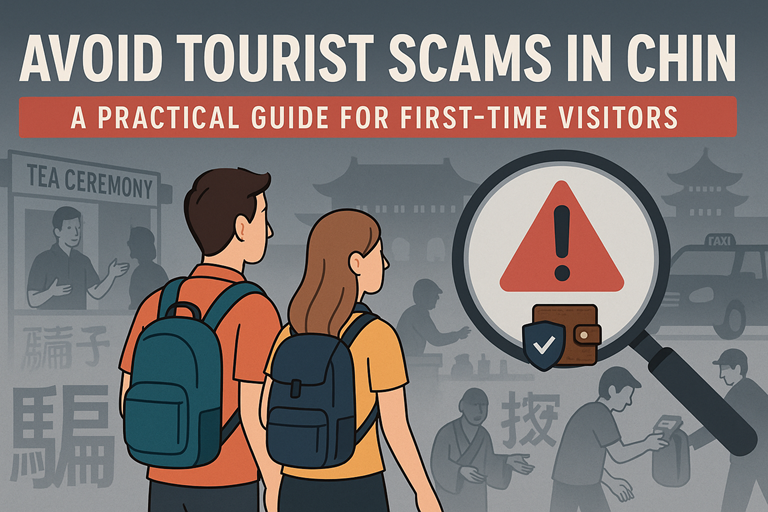Navigating Domestic Travel in China: High-Speed Rail, Flights, or Buses – Which to Choose?
China is a land of staggering scale and diversity, from the imperial palaces of Beijing to the karst peaks of Guilin, the futuristic skyline of Shanghai to the remote plateaus of Tibet. Exploring its many wonders invariably involves domestic travel.
Overview of Travel Options
Fortunately, China offers a sophisticated and extensive network of options, primarily revolving around its world-renowned High-Speed Rail (HSR), a comprehensive domestic flight system, and a far-reaching network of long-distance buses.
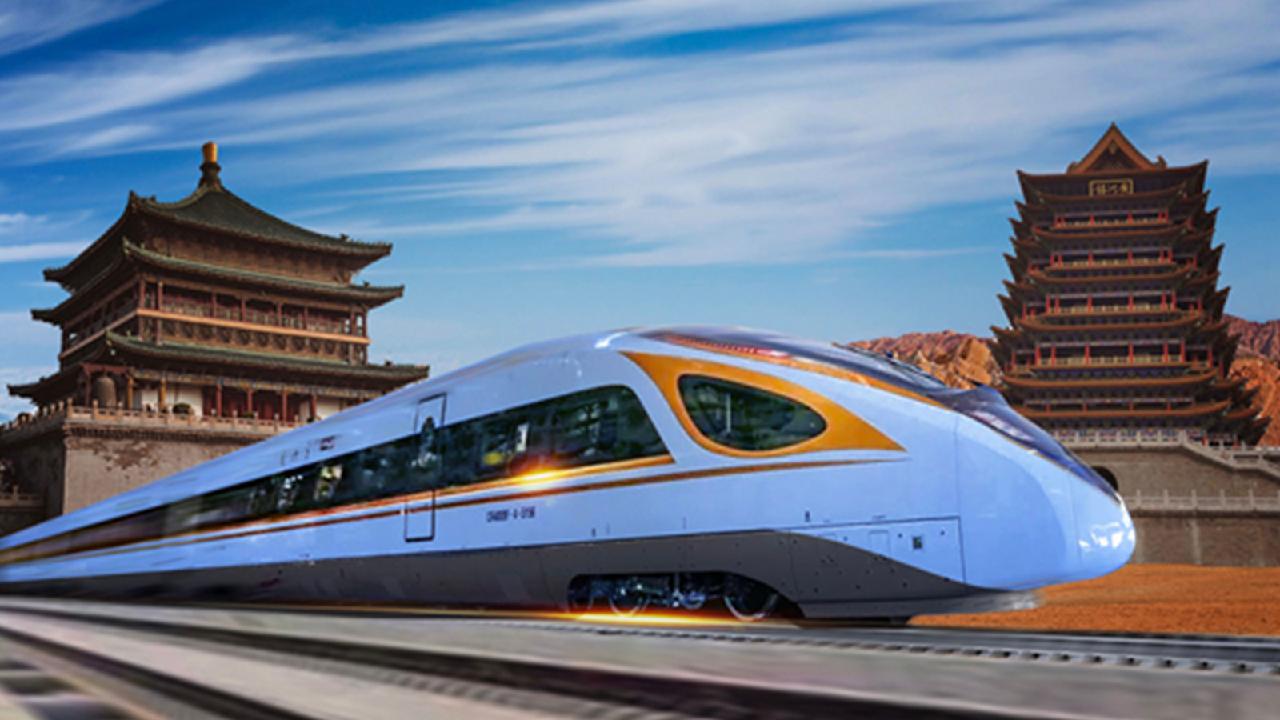
But with so many choices, how do you decide what’s best for your journey? The optimal mode of transport depends heavily on factors like:
- Distance: Short, medium, or long journeys
- Budget: Cost considerations
- Time: Travel duration constraints
- Comfort: Desired level of comfort
- Scenery: Desire to see the landscape
“This guide will demystify China’s domestic travel landscape, helping you choose wisely for an unforgettable exploration.”
Part 1: High-Speed Rail (高铁 – Gāotiě) – China’s Modern Marvel
China’s High-Speed Rail (HSR) network is an engineering feat and a traveler’s dream. It’s the world’s most extensive, connecting almost all major cities and many smaller ones with sleek, modern trains gliding at speeds of up to 350 km/h (217 mph).
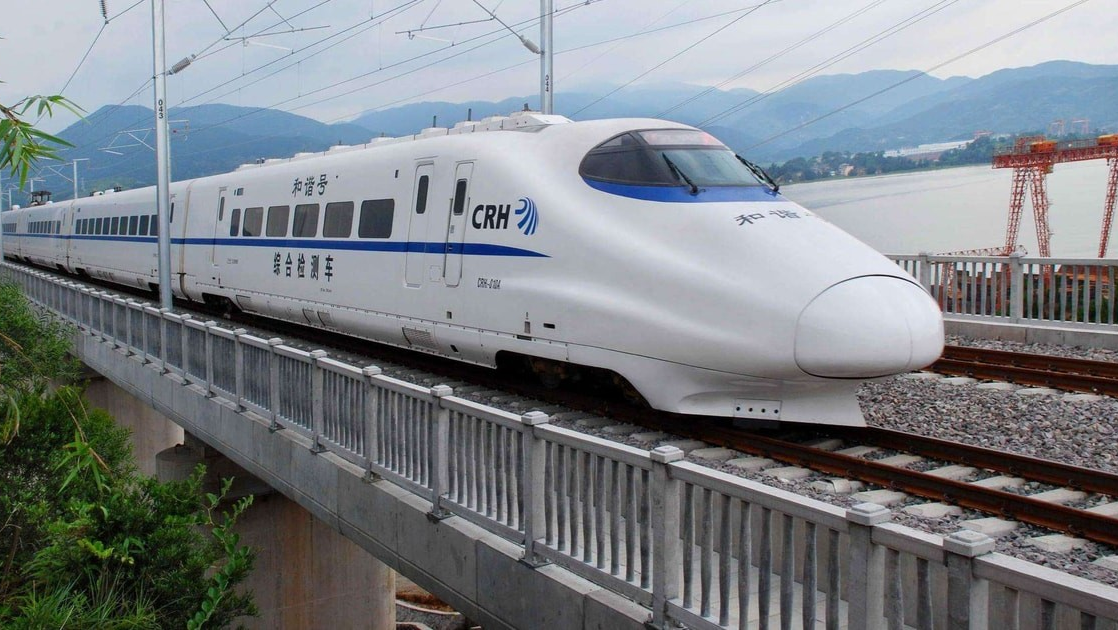
Overview of Chinese High-Speed Trains
G-trains (高铁 – Gāotiě)
The fastest and most advanced, typically long-distance, operating at 300-350 km/h. They make fewer stops.
D-trains (动车 – Dòngchē)
“Bullet trains” that are also fast (usually 200-250 km/h) but may serve more intermediary stations or routes where G-trains aren’t available. Still an excellent HSR experience.
The general impression of China’s HSR is one of remarkable efficiency, comfort, and punctuality.
Pros of High-Speed Rail
- Speed & Efficiency for Medium Distances (approx. 200-1200 km / 125-750 miles): For these distances, HSR is often faster overall than flying when you factor in travel to/from airports, security checks, and check-in times. City-center to city-center, HSR frequently wins.
- Exceptional Comfort: Seats are generally more spacious than on airplanes or buses, with ample legroom even in Second Class. First Class offers wider seats and more space, while Business Class provides a luxurious, lie-flat seat experience. The ride is incredibly smooth and quiet.
- Punctuality & Reliability: HSR is far less susceptible to weather delays than air travel and boasts an impressive on-time performance record.
- Convenient Station Locations: While some newer HSR stations are on city outskirts, many are centrally located or directly connected to city metro systems, making them more accessible than airports.
- Scenic Views: Traveling overland allows you to witness China’s diverse landscapes, from agricultural plains and rolling hills to mountain ranges and sprawling urban developments – sights you completely miss from 30,000 feet.
- Onboard Amenities:
- Free boiling water dispensers are standard (perfect for instant noodles or tea – a common sight).
- Snack trolleys pass through carriages, and many trains have a buffet car selling meals, snacks, and drinks.
- Power outlets (Chinese sockets, bring an adapter) are available at most seats.
- Toilets are generally clean and well-maintained (both Western-style and squat toilets are usually available).
- Generous Baggage Handling: No strict liquid restrictions like on planes. You carry your own luggage on board and place it in overhead racks or designated luggage areas. While there are official size/weight guidelines, they are rarely strictly enforced for typical tourist luggage unless it’s excessively large.
- Connectivity: Free Wi-Fi is increasingly common on HSR trains, though speed and reliability can vary.
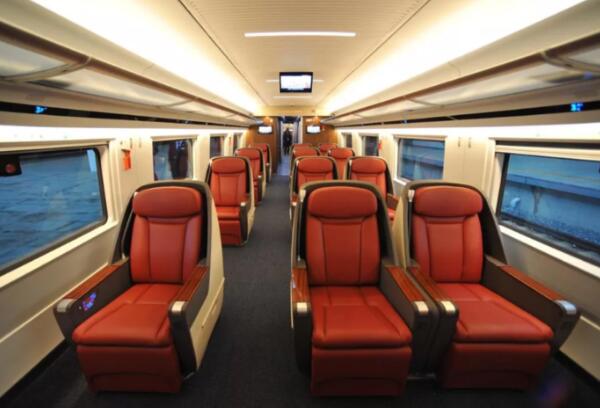
Cons of High-Speed Rail
- Cost: Generally more expensive than long-distance buses and conventional (slower) trains. For very long distances, HSR can sometimes be comparable to, or even pricier than, discounted domestic flights.
- Very Long Distances (>1200-1500 km / >750-930 miles): While comfortable, the journey time can become excessively long (e.g., 8+ hours) compared to a 2-3 hour flight.
- Station Size & Navigation: Major HSR stations are enormous and can feel like airports. They can be crowded, especially during peak times. Allow ample time (at least 60-90 minutes before departure) for security checks, ticket verification, and finding your platform.
- Booking in Advance is Crucial: Tickets for popular routes (e.g., Beijing-Shanghai, Chengdu-Xi’an) and during public holidays or weekends can sell out days or even weeks in advance.
- Language Barrier: While station signage is typically bilingual (Chinese and English), platform announcements may primarily be in Mandarin. English proficiency among station staff varies.
- Security Checks: Similar to airports, you’ll need to pass your luggage and yourself through X-ray scanners before entering the waiting hall.
When to Choose High-Speed Rail
- Intercity travel for distances comfortably covered in 2-6 hours by HSR. This is the sweet spot (e.g., Beijing ⇌ Shanghai, Shanghai ⇌ Hangzhou, Guangzhou ⇌ Shenzhen, Chengdu ⇌ Chongqing, Xi’an ⇌ Luoyang).
- When comfort, a reliable schedule, and a smooth journey are high priorities.
- If you enjoy watching the scenery unfold.
- During seasons prone to flight disruptions due to weather (e.g., fog, typhoons in coastal areas).
- If you prefer less hassle with baggage and security compared to flying.
Booking High-Speed Rail Tickets
Online (Recommended for Foreigners):
- Trip.com: This is the most popular and user-friendly platform for international travelers. It has an excellent English interface, accepts international credit cards, and provides clear instructions for ticket collection or e-ticket usage.
- Official China Railway Website (12306.cn): This is the official source, but it can be challenging for those who don’t read Chinese or have Chinese mobile payment options, although efforts are being made to improve its accessibility for international users.
- Other OTAs: Some other international travel agencies may also offer Chinese train ticket bookings.
At the Train Station:
You can purchase tickets directly at the train station’s ticket windows. Look for designated windows for “Ticket Purchase” (购票 – Gòupiào).
Cons: Expect potentially long queues, especially at busy times. Language can be a barrier; it’s highly advisable to have your destination, date, train number (if known), and preferred class written down clearly in Chinese. Seats on popular routes may be sold out if booking last minute.
Passport Required: You MUST have your original passport to buy tickets and to board the train.

The High-Speed Rail Travel Experience
- Arrival at the Station: Arrive at least 60-90 minutes before departure. Stations are large, and you’ll need time for security and finding your gate.
- Security & Ticket Check: You’ll pass through a security check (luggage and personal X-ray). Then, your ticket (paper or e-ticket on your phone) and passport will be checked to enter the main waiting hall.
- Waiting Hall & Boarding: Large electronic display boards (usually in Chinese and English) show train departures, platform numbers, and boarding status. Boarding usually starts 15-30 minutes before departure and gates close about 5 minutes before the train leaves.
- Finding Your Carriage & Seat: Your ticket will indicate your carriage (车厢 – Chēxiāng) number and seat (座位 – Zuòwèi) number. These are clearly marked on the train and platforms.
- Onboard: Settle in, store your luggage, and enjoy the ride! Staff may come through to check tickets again. Announcements are made for upcoming stations.
Part 2: Domestic Flights (国内航班 – Guónèi Hángbān) – Bridging China’s Great Distances

For traversing China’s vast expanses or reaching its more remote corners, domestic flights are often the most practical choice. China has a well-developed domestic aviation industry with numerous airlines and airports connecting virtually all regions.
Key Airlines in China
- Air China (CA) – National flag carrier
- China Eastern (MU) – Major east coast operator
- China Southern (CZ) – Largest Asian airline
- Hainan Airlines (HU) – Premium service
- Sichuan Airlines (3U) – Western China specialist
- XiamenAir (MF) – Southern China focus
Pros of Domestic Flights
Speed & Coverage
Unbeatable for long distances: When crossing from Beijing to Urumqi (2,400km) or Shanghai to Kunming (1,900km), flying reduces travel time from days to hours.
Remote access: Essential for reaching Tibet, Western Sichuan, or Xinjiang’s remote areas where ground transport is limited.

Cost & Comfort
Competitive pricing: Advance bookings can be 40-60% cheaper than last-minute tickets.
Premium options: Business class offers lie-flat seats on major routes like Beijing-Shanghai.
Airline alliances: Earn miles through Star Alliance (Air China) or SkyTeam (China Eastern).
Tip: Tuesday/Wednesday flights are typically 15-20% cheaper than weekend flights
Cons of Domestic Flights
-
Airport hassle factor:
- Average 2-hour pre-flight arrival requirement
- Most airports 30-90 minutes from city centers
- Total door-to-door time often exceeds 5 hours
-
Delay risks:
- 30% of flights delayed in 2023 (CAAC data)
- Worst in summer thunderstorm season
- Limited compensation policies
-
Baggage restrictions:
- Strict liquid limits (100ml per container)
- Power bank restrictions (≤20,000mAh)
- Checked baggage fees on budget carriers

When to Choose Domestic Flights
Long Distances
Beijing to Guangzhou (1,900km) – Flight: 3hrs vs HSR: 8hrs
Remote Regions
Accessing Lhasa (Tibet) or Kashgar (Xinjiang)
Time Sensitivity
Business meetings or tight connection windows
Flight Deals
When fares drop below ¥500 for long routes
Booking Domestic Flights
| Platform | Best For | Pros | Cons |
|---|---|---|---|
| Trip.com | Foreign travelers | English interface, international cards | Service fees apply |
| CTrip (Chinese) | Best prices | Local promotions, bundled deals | Chinese interface only |
| Airline Sites | Loyalty members | Extra baggage, seat selection | Limited payment options |
The Flight Experience
- Airport arrival: Minimum 2 hours before domestic flights
- Security screening: Strict checks for electronics/liquids
- Boarding process: Group-based boarding common
- In-flight service: Full meals on 2hr+ flights
- Arrival process: Baggage claim typically 20-40 minutes
Part 3: Long-Distance Buses (长途汽车 – Chángtú Qìchē) – The Budget & Local Connection

For the budget-conscious traveler or those looking to venture off the beaten path, China’s extensive network of long-distance buses reaches almost every corner of the country, from bustling metropolises to remote villages.
China’s Bus Network at a Glance
Coach Types
- Standard Express: Air-conditioned coaches for intercity routes
- Sleeper Buses: Overnight journeys with bunk beds
- Local Service: Basic buses for rural connections
Typical Journeys
- Guangzhou to Guilin: ¥180 (5-6 hours)
- Chengdu to Jiuzhaigou: ¥150 (8-9 hours)
- Kunming to Dali: ¥120 (4-5 hours)
Pros of Long-Distance Buses
💰 Most Cost-Effective
Unquestionably the cheapest way to travel longer distances in China. Prices are typically 30-50% of equivalent train fares.
📍 Extensive Reach
Buses go where trains and planes don’t, connecting to countless smaller towns, rural destinations, and specific tourist sites that might otherwise require multiple transfers.
🎫 Booking Flexibility
For shorter, less popular routes, you might be able to buy tickets just before departure, offering more spontaneity than pre-booked transport.
🚌 Direct Routes
Can sometimes offer a more direct journey to a specific scenic area or smaller town without the need to go via a major city hub.
👥 Authentic Experience
Provides a more “grassroots” view of the country and opportunities to travel alongside local people, offering cultural insights rarely found on planes or trains.
🛏️ Sleeper Buses (Potential Pro)
Can save on a night’s accommodation, arriving in your destination in the morning after an overnight journey.
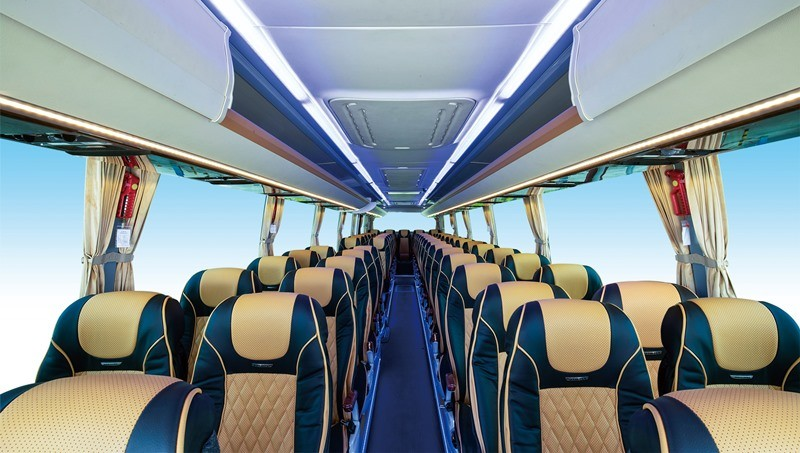
Cons of Long-Distance Buses
⏱️ Slowest Option
Significantly slower than HSR or flights, subject to road traffic, lower average speeds (typically 60-80 km/h), and multiple stops (though express buses make fewer stops).
🪑 Variable Comfort
Modern coaches on popular routes can be comfortable. However, older buses or rural routes can be cramped, noisy, with poor suspension and minimal legroom.
🛌 Sleeper Bus Challenges
Bunks are often short (under 1.7m), shared blankets may be unclean, security of belongings can be a concern, and some find the motion makes sleep difficult.
🛣️ Road Safety Concerns
While major highways are excellent, road conditions and driving standards can be less consistent in remote or mountainous regions.
🗣️ Language Barrier
Bus station staff and drivers are less likely to speak English. Destination signs on buses and at stations may only be in Chinese.
🚻 Limited Amenities
Onboard toilets are rare or basic; buses rely on scheduled rest stops (which may have questionable facilities). Bring your own snacks and water.
🎟️ Booking Difficulties
Online booking is less accessible for foreigners, often requiring a Chinese ID or local payment methods like WeChat Pay.
🚧 Traffic Delays
Journey times can be highly unpredictable due to traffic congestion, especially around major cities or during holidays.

When to Choose Long-Distance Buses
Budget Travel
When every yuan counts and time is less critical
Remote Destinations
Accessing villages or scenic areas without rail service
Short Journeys
Under 4 hours where time difference is minimal
Adventure Seeking
For authentic, off-the-beaten-path experiences
Last Resort
When train/flight tickets are completely sold out
Booking Long-Distance Bus Tickets
At the Bus Station (Most Common)
- Cities often have multiple bus stations – verify the correct one for your destination
- Have your destination written clearly in Chinese characters
- Passport required for ticket purchase
- Buy at least a day in advance for popular routes
Online/App Booking
- Trip.com offers limited bus routes
- WeChat/Alipay require Chinese payment methods
- BusTicketChina.com (English interface)
Through Accommodation
- Hostels/hotels may book tickets for a small fee
- Particularly useful for sleeper bus tickets
The Bus Travel Experience
Finding Your Bus
Match Chinese characters on your ticket to destination signs on buses. Allow extra time for station navigation.
Luggage Handling
Large bags stored in undercarriage compartments. Keep valuables in a small carry-on bag.
On the Road
Routes often pass through interesting local scenery. Bring entertainment for longer journeys.
Rest Stops
Typically every 2-4 hours at service areas with basic facilities. Bring toilet paper and hand sanitizer.
Arrival
Bus stations are often on city outskirts. Have a plan for onward local transport (taxi, bus, DiDi).

Part 4: Making Your Choice – The Ultimate China Travel Decision Guide

Now that we’ve explored each option in depth, it’s time to synthesize this knowledge into actionable decision-making strategies. Your optimal choice depends on a unique combination of distance, budget, time constraints, and personal preferences.
The Ultimate Comparison Matrix
| Criteria | High-Speed Rail | Domestic Flights | Long-Distance Bus |
|---|---|---|---|
| Best For Distance | 200-1200km (e.g., Beijing-Shanghai) | 1200km+ (e.g., Beijing-Guangzhou) | Under 400km or remote areas |
| Cost (Sample Route) | Beijing-Shanghai: ¥550-1800 | Beijing-Guangzhou: ¥600-2200 | Guangzhou-Guilin: ¥120-180 |
| Time Efficiency | ★★★★☆ City center to center | ★★★☆☆ Airport transit adds hours | ★★☆☆☆ Subject to traffic |
| Comfort Level | ★★★★★ Spacious, smooth ride | ★★★★☆ Modern but cramped | ★★☆☆☆ Highly variable |
| Baggage Flexibility | ★★★★★ No liquid restrictions | ★★☆☆☆ Strict security limits | ★★★★☆ Generous allowance |
| Booking Ease | ★★★★☆ Trip.com works well | ★★★★★ Multiple platforms | ★★☆☆☆ Station purchase best |
| Scenery Experience | ★★★★★ Landscape views | ★☆☆☆☆ Clouds only | ★★★★☆ Ground-level views |
Decision Flowchart: What to Choose When
Start: Your Journey Distance?
Under 400km?
Yes → Bus or HSR
No → Next question
400-1200km?
Yes → HSR (best balance)
No → Flight (over 1200km)
Special Considerations
✅ Choose HSR if: Comfort priority, scenic value, avoiding airports
✅ Choose Flight if: Time critical, traveling >1200km, going to Tibet/Xinjiang
✅ Choose Bus if: Extreme budget, remote villages, last-minute travel

Special Scenario Recommendations
🇨🇳 During National Holidays
- Book 60 days in advance for flights/HSR
- Avoid buses on peak travel days (extreme delays)
- Consider traveling on the holiday itself (less crowded)
🧳 With Large Luggage
- HSR: Best for bulky items (no weight limits)
- Flight: Check baggage fees carefully
- Bus: Limited storage space
👨👩👧👦 Family Travel
- HSR: Best overall (space, comfort, amenities)
- Flight: Good for long distances
- Avoid sleeper buses with children
⛰️ Mountainous Regions
- Flight: Most efficient to gateway cities
- Bus: Often only option for remote areas
- Check road conditions in rainy season
Pro Tips for Seamless China Travel
Essential Apps
Trip.com (transport)
DiDi (taxis)
WeChat (payments)
Pleco (translation)
Document Essentials
Always carry passport
Make copies of visa page
Have hotel addresses in Chinese
Payment Wisdom
Cash still needed in rural areas
Setup Alipay TourPass
Notify bank of travel plans
Safety First
Register with embassy
Save emergency numbers (110/120)
Buy travel insurance
Final Wisdom: Blend Your Transport
The savviest travelers combine transport modes. For example:
- Coastal Explorer: Fly to Xiamen → HSR to Fuzhou → Bus to Taining villages
- Silk Road Journey: Fly to Urumqi → Train to Turpan → Bus to desert sites
- Yunnan Adventure: Fly to Kunming → HSR to Dali → Bus to Shaxi ancient town
Your Journey Awaits
China’s vastness is its wonder and its challenge. With this comprehensive guide, you’re now equipped to navigate this magnificent country with confidence. Whether you choose the lightning speed of the G-train, the aerial perspective of China’s airlines, or the slow reveal of the long-distance bus, each journey offers its own unique window into this endlessly fascinating land.
“The real voyage of discovery consists not in seeking new landscapes, but in having new eyes.” – Marcel Proust

Enjoyed this article? Consider buying me a coffee to support more content like this!
💖 0 people have clicked to support this article.


